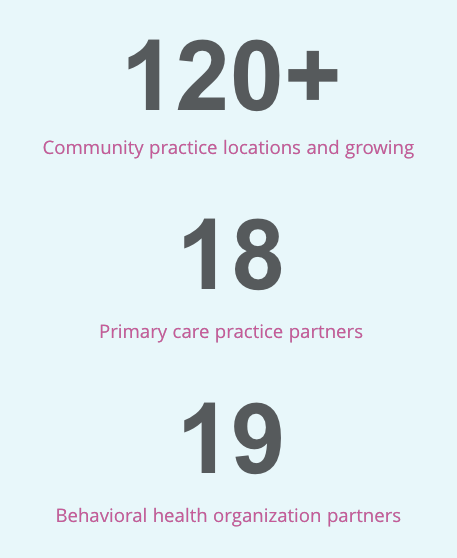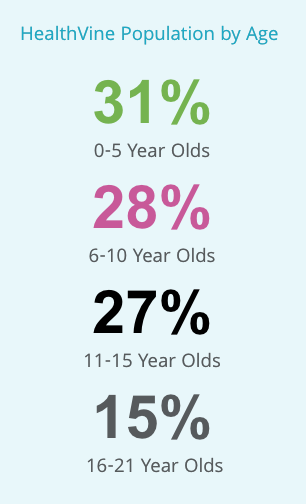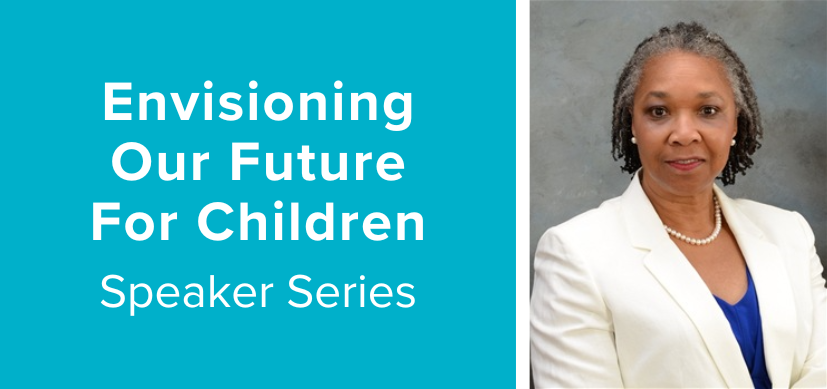Cincinnati Children’s HealthVine Spotlights Early Success – and What’s Next
Post Date: November 14, 2022 | Publish Date:

“We are excited to look back on our history so far and celebrate this milestone with you. The stories and data … illustrate the impact we have had so far—and what’s possible for the future of pediatric population health in our region, in Ohio, and around the country.”
–Jeffrey Anderson, MD, MPH, MBA
Senior Vice President and Chief Population Health Officer, Cincinnati Children’s
The leadership of Cincinnati Children’s HealthVine, a pediatric accountable care organization (ACO) that serves over 100,000 kids and young adults enrolled in Medicaid through the CareSource insurance company, has shared highlights of the ACO’s accomplishments during the initial 18 months of operation.
HealthVine, a network of pediatric care providers and organizations backed by Cincinnati Children’s, provides care management, quality improvement, and utilization management for all children with CareSource Medicaid insurance in the eight southwest counties in Ohio.
“We began with the launch of the HealthVine Care Management Program on Jan. 1, 2021, during a most unusual time, still in the throes of the prolonged, global COVID-19 pandemic,” said Jeffrey Anderson, MD, MPH, MBA, senior vice president and chief population health officer for Cincinnati Children’s. “Like all healthcare institutions, we had to adapt, innovate and adjust to meet the needs of our members and community partners in an unpredictable environment.”
Despite difficulties posed by the pandemic, HealthVine achieved early success, Anderson stated in the first annual report for the ACO. Highlights included:
- Launching and operationalizing the Utilization Management Program on July 1, 2021.
- Receiving accreditation from the National Committee for Quality Assurance for the care management program.
- Expanding the Integrated Behavioral Health offerings at Cincinnati Children’s to several Cincinnati-area community practices to increase access to behavioral health assessment, treatment and services.
- Creating the Research and Innovation Program, launched in mid-2022, to propel the development of clinically integrated, evidence-based population health interventions.
Read the Cincinnati Children’s HealthVine 2021 Annual Report

At its inception, HealthVine became responsible for the healthcare and health outcomes of about 135,000 CareSource Medicaid-covered youths living in Adams, Brown, Butler, Clermont, Clinton, Hamilton, Highland, and Warren counties. Members include: youths ranging from infants through 19 years old; youths and young adults up to age 21 in the Aged, Blind and Disabled program; and youths and young adults up to age 21 in the Adopted and Foster Child program.
The leadership of Cincinnati Children’s has set its sights on ensuring that the region’s children are the healthiest in the nation and that the medical center is a leader in pediatric population health, Anderson said. By coordinating community resources on behalf of patients and families, Cincinnati Children’s HealthVine is reimagining how to deliver high-quality care to more kids in our region so they can have the best outcomes, experience, and value.
Anderson, a pediatric cardiologist, oversees HealthVine along with Kim Kaas, vice president for Operations-Population Health at Cincinnati Children’s.
In the coming months and years, the HealthVine team expects to expand its influence on pediatric care and outcomes in our region, Kaas said. HealthVine’s broad influence includes work with families, payors, community benefit organizations, primary care clinics (both Cincinnati Children’s Primary Care and community primary care), schools, and subspecialists at Cincinnati Children’s, as well as local adult hospital systems that care for pediatric patients and our long-standing Provider Hospital Organization, Tri-State Child Health Services.

The children under HealthVine’s care are some of the most vulnerable—medically, emotionally, and socially. Claims for 2021 services showed that the highest costs were incurred for the treatment of members with:
- Asthma
- Depression
- Congenital heart disease
- Premature birth
- Complex conditions that make them depend on equipment or technology such as implanted devices, feeding tubes, or respirators.
Members of the Medicaid population can be profoundly affected by social determinants of health. Examples of social determinants include economic stability, education access and quality, health care access and quality, neighborhood and built environment, and social and community context. The children and youths supported by HealthVine are at risk for having more gaps in care—fewer checkups and immunizations, for example—and the care they receive can often be fragmented and uncoordinated.
The annual report also spotlights what might be next for HealthVine. The ACO is exploring ways to:
- Transform insight gained from data to develop and spread evidence-based interventions and close healthcare gaps among members.
- Expand HealthVine’s reach in the communities served by Cincinnati Children’s to increase awareness and use of the services and support available to members and their families.
- Optimize Care Management and Utilization Management operations to see that children are well cared for and healthcare dollars are well spent.
“We are excited to look back on our history so far and celebrate this milestone with you,” Anderson said in the annual report. “The stories and data … illustrate the impact we have had so far—and what’s possible for the future of pediatric population health in our region, in Ohio, and around the country.”





